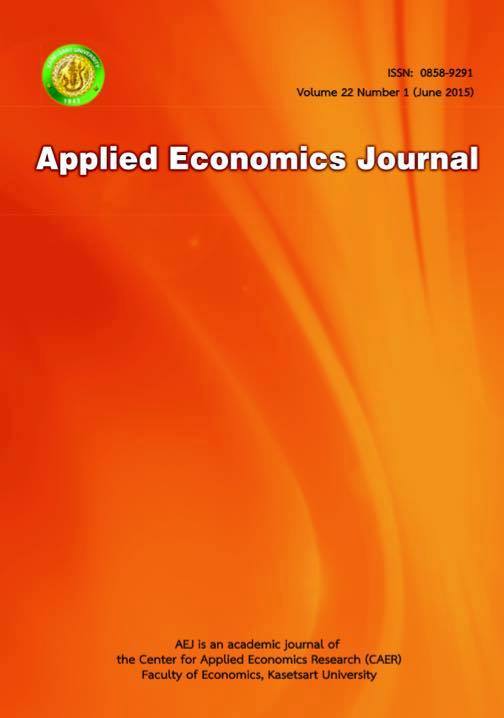Risk and Inequality
Main Article Content
Abstract
Nowadays the ways of life and doing business are inevitably associated with a wide range of risks. The recent severe flooding widely and adversely affected residents and businesses in Thailand. In this issue of Applied Economics Journal (Vol. 22 No.1, June 2015), Penporn et al. assess the benefits that households expect to get from a reduction in flooding risk resulting from the flood mitigation plan valued 8.82 billion baht per year. They found that households are willing to pay 2,056 baht per household per year for this plan. Besides a natural disaster mentioned above, other risks are also unavoidable for businesses. A commercial bank like Bank for Agriculture and Agricultural Co-operatives (BAAC) which is a main source of loans for farmers also faces a wide range of risks including default risks of farm loans. Songkran develops a tool to help BAAC manage credit risks. He uses a logit model to develop processes for credit scoring system and internal credit risk rating system. Furthermore, other major problems of Thai society are an inequality in income. Khemarat and Sittidaj study an inequality in income between maize farmers in lowland and highland. The results indicate significant differences in income between farmers in these two areas. Specifically, farmers on highland have statistically significantly lower income accumulation and rely more on loans from loan sharks compared to farmers on lowland. The last article is entitled ”Exploring long-run relationship and error correction of Thai output and price” by Kanokwan. In order to describe how policymakers should stabilize the economy, this article analyzes the long-run relationship and the adjustment process toward equilibrium. The results of this article should help policymakers in making decisions. Risks and inequalities mentioned are followed by solutions from a theoretical perspective. In this issue, it is an honor to have two book reviews from two experts. Piyathip reviews a book entitled ”Nature and Balance”. This book integrates ecology and economics and suggests how to apply economics to evaluate biodiversity. This can be a tool for policymakers to decide whether current policies are appropriate and to revise them to make them suitable with both economic development and biodiversity management. Mohammad Alam reviews a book entitled ”Food Security, Poverty and Nutrition Policy analysis: Statistical Methods and Application” which points out the current situation in food security and poverty in developing countries. This book also describes statistical analysis for these issues which should lead to policies to alleviate these problems.
Article Details
How to Cite
-, .-. (2016). Risk and Inequality. Asian Journal of Applied Economics, 22(1), i. Retrieved from https://so01.tci-thaijo.org/index.php/AEJ/article/view/57249
Section
Editorial Note
The paper is published under CC BY-NC-ND, in which the article is freely downloaded and shared in its original form non-commercially and its citation details are identified.
